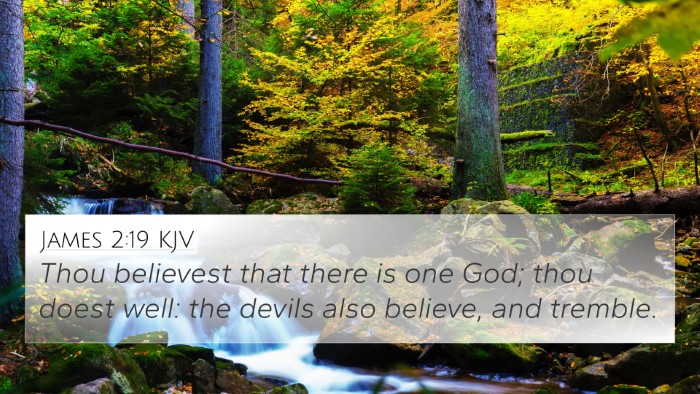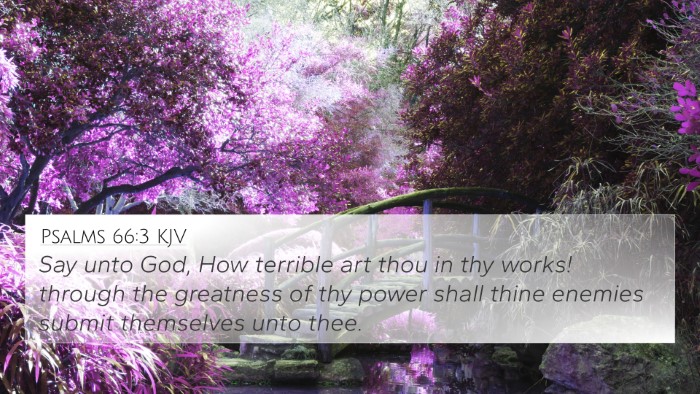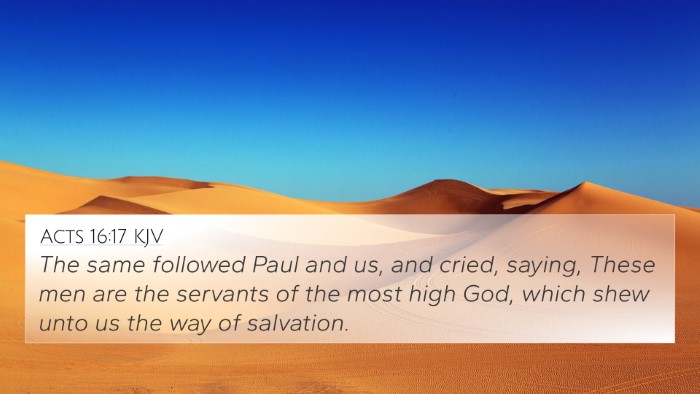Understanding Mark 5:6
Mark 5:6 states: "But when he saw Jesus afar off, he ran and worshipped him." This verse reveals significant thematic and spiritual connections within the Scriptures, serving as a starting point for a rich analysis of its implications and associations in biblical texts.
Contextual Meaning
This verse occurs in the account of Jesus healing the man possessed by a legion of demons in the region of the Gerasenes. The immediate context emphasizes the transformative power of Jesus and the recognition of His authority by even the most troubled individuals.
Thematic Analysis
The act of running and worshipping illustrates profound recognition and reverence. The demon-possessed man, once a figure of despair, exemplifies the possibility of redemption and worship in response to the divine:
- Recognition of Authority: The man's actions symbolize acknowledgment of Jesus as the Son of God.
- Transformation: The former demoniac's return to a state of worship points to the restoring power of Christ.
- Faith’s Expression: Running to Jesus signifies action born out of faith and desperation for spiritual healing.
Commentary Insights
Matthew Henry's Commentary
Henry emphasizes that the man recognized Jesus from a distance, indicating that spiritual insight can pierce through the chaos of possession. His worship, despite his condition, highlights the innate human need for connection with the divine.
Albert Barnes' Commentary
Barnes notes that the act of running towards Jesus represents a break from the past, urging believers to approach Christ without hesitation. He draws attention to the desperation that often precedes divine encounters, serving as a catalyst for transformation.
Adam Clarke's Commentary
Clarke elaborates on the cultural implications of worship, suggesting that the man’s actions reflect a deep understanding of Jesus’ power and mercy. He underscores the importance of humility in coming before God.
Cross-Referencing Biblical Texts
This verse relates strongly to several other passages within the Bible, showcasing thematic parallels and deepening our understanding of worship and recognition of Jesus' authority:
- Luke 8:28: "When he saw Jesus, he cried out and fell down before him." (Similar recognition and worship)
- John 12:32: "And I, when I am lifted up from the earth, will draw all people to myself." (Indication of attraction to Christ)
- Philippians 2:10-11: "So that at the name of Jesus every knee should bow..." (Universal recognition of Christ's authority)
- Matthew 4:10: "You shall worship the Lord your God, and Him only shall you serve." (Command to worship God alone)
- Mark 15:39: "And when the centurion, who stood there in front of Jesus, heard His cry..." (Recognition from unexpected sources)
- Matthew 8:29: "What do you want with us, Son of God?" (Demons recognizing Jesus' authority)
- Isaiah 45:23: "To me every knee will bow; every tongue will swear allegiance." (Prophecy about worship)
- Romans 10:13: "For everyone who calls on the name of the Lord will be saved." (Inclusivity of those seeking Jesus)
- Revelation 7:11-12: "All the angels were standing around the throne..." (Heavenly worship)
- Mark 9:24: "Lord, I believe! Help my unbelief!" (Desperation for faith)
Connecting Themes
The various accounts illustrate the connections between belief, recognition of Jesus, and the response of worship. Each cross-referenced verse stands as a testament to the transformative encounters people have with Christ:
- The theme of desperation leading to worship is evident throughout various accounts of healing.
- Authority of Christ: The recognition of Jesus' power is a common thread, compelling individuals to bow before Him.
- Transformation: Those who encounter Christ are often dramatically changed, moving from despair to worship.
Practical Applications
For modern readers, this verse serves as a call to recognize Jesus' power and authority in their own lives. It encourages:
- Active Worship: Reflect on how you express your reverence and appreciation for God.
- Seek Healing: Approach Jesus with your struggles and allow Him to transform your life.
- Recognize Authority: Acknowledge the sovereignty of Christ in all areas of life, leading to an authentic relationship.
Conclusion
Mark 5:6 encapsulates the essence of recognition and worship in the face of Jesus’ transformative power. Through cross-referencing related verses and exploring commentary insights, the rich themes surrounding this scriptural moment flow into deeper understanding and practical application in our walk of faith.







